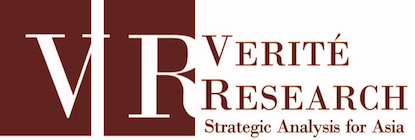Economy
With a population of 21.4 million and a GDP per capita in 2017 of USD 4065, Sri Lanka is recognised as a lower middle-income country. Since the end of the armed conflict in 2009, the country’s economy has grown on an average rate of 5.8% a year. The economy is transitioning from a dominantly rural-based economy to a more urban economy, leaning towards manufacturing and services. Surpassing most of its Millennium Development Goals (MDG) targets set for 2015, Sri Lanka was ranked 73rd in the Human Development Index in the same year.
There exists a lack of information concerning the media sector’s contribution to the Sri Lanka economy. While it is fairly simple to start a periodical print publication in Sri Lanka, due to the lack of startup fees or other restrictions on new print titles, following establishment, these outlets tend to struggle with problems of commercial viability. While it is reported that most media outlets in the country run at an operational loss, the lack of transparency from both the public and private sector has made it difficult to verify this. These operational difficulties usually arise as a result of taxation policy and the political economy of the advertising industry. For years, media companies have highlighted issues such as the high cost of newsprint, various import duties and other taxes that affect their operations.
Media companies do not receive any industry-specific tax concessions, and there are no preferential import duties on newsprint, printing ink or broadcast equipment. However, state-owned media houses occasionally benefit from import duty concessions for such materials.
Advertising remains the largest source of revenue for print and broadcast media in Sri Lanka. Nielsen (Sri Lanka) estimated Sri Lanka’s total advertising (public and private) in the media to be approximately LKR 77 billion (USD$ 477 mn) in 2014. By controlling nearly 70% of the advertising economy, the state is the single biggest advertiser. Irrespective of their circulation or audience ratings, state-owned print and broadcast houses have historically received a significant share of state advertising. Notably, the use of public funds to promote politicians and political projects reached new heights under the previous government. Following his election in January 2015, President Maithripala Sirisena directed state institutions to discontinue this practice. Previously, any private media outlet opposing the government ran the risk of having state advertisements removed, putting its survival as a viable entity in danger. As such, most private media companies are incentivised to work in favour of the government.
Sources
Nielsen. Advertising Expenditure- Gain Insight into Ad Spend
Retrieved from Nielsen on 25 July 2018.
Secretariat for Media Reforms. Rebuilding Public Trust- An assessment of the media industry and profession in Sri Lanka. (2016).
Retrieved from Media Support on 25 July 2018.
World Bank in Sri Lanka. Overview.
Retrieved from the World Bank on 25 July 2018.


